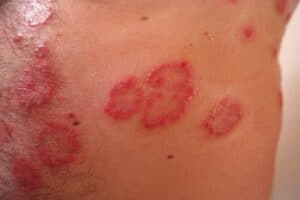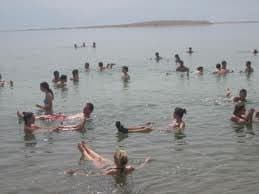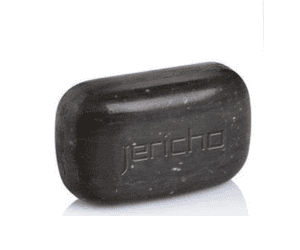The Natural Skincare Illusion
These days in skincare the word, “natural” has become a buzzword printed boldly on labels, splashed across ads, and championed by influencers. But here’s the truth: not everything labeled “natural” is truly clean, safe, or transparent.
With marketing tactics like greenwashing running rampant, learning to read product labels is your first step toward protecting your skin and your health. In this guide, we’ll break down exactly how to spot genuine natural skincare, what ingredient red flags to avoid, and how to decode confusing cosmetic jargon.
Why Label Reading Matters in Skincare
Our skin absorbs up to 60% of what we put on it. That means every lotion, cleanser, or serum you use matters. While brands often use words like “natural,” “organic,” and “clean,” those terms aren’t regulated making them more about marketing than ingredients.
If you’re serious about natural skincare especially if you’re using sensitive skin friendly formulas or Dead Sea mineral based products understanding the label is your most powerful tool.
1. Key Terms and What They Actually Mean
Let’s start with the most common terms you’ll find on product labels and what they really mean.
1.1 Natural
-
What you think it means: Free from synthetic chemicals or preservatives.
-
What it often means: Contains some natural ingredients, but could still include artificial additives.
There’s no FDA regulation for the word “natural,” which means any brand can use it freely.
1.2 Organic
-
Regulated more strictly in many countries.
-
Look for certification like USDA Organic, COSMOS Organic, or EcoCert.
1.3 Clean Beauty
-
Vague, loosely defined by brands themselves.
-
Generally implies non-toxic, but again — not regulated.
1.4 Non-Comedogenic
-
Designed not to clog pores.
-
Look for this if you have acne-prone or oily skin.
1.5 Hypoallergenic
-
Suggests a lower chance of causing allergies — but no governing body enforces this claim.
Pro Tip: Trust the ingredient list, not the front of the packaging.
2. The INCI List – What It Is and Why It Matters
INCI stands for International Nomenclature of Cosmetic Ingredients. It’s the globally standardized system that lists all ingredients used in a product from highest concentration to lowest.
How to Read It:
-
First 3–5 ingredients make up the bulk of the formula.
-
Botanical names (like Aloe Barbadensis Leaf Juice) are often followed by their common names in parentheses.
-
Active ingredients (like Zinc Oxide or Hyaluronic Acid) are often listed with percentages.
If “Dead Sea salt” or “Dead Sea mud” is buried at the end, the product contains only trace amounts.
3. Ingredients to Love in Natural Skincare
These are the stars of a truly natural product especially in clean formulations based on minerals, plants, or essential oils.
Safe, Natural Ingredients:
-
Aloe Vera – Calming and hydrating
-
Shea Butter – Moisturizing, nourishing
-
Dead Sea Salt & Mud – Detoxifying, mineral rich
-
Jojoba Oil – Balances sebum, great for oily skin
-
Chamomile Extract – Anti-inflammatory and soothing
-
Vitamin C (Ascorbic Acid) – Brightens and supports collagen
-
Squalane (plant-derived) – Lightweight hydrator, non-comedogenic
Look for ingredients with recognizable names. If it sounds like something from a chemistry lab, research it or proceed with caution.
4. Ingredients to Avoid in “Natural” Products
Even products labeled “natural” can sneak in harmful or questionable ingredients. Here’s what to watch out for:
Ingredients to Avoid:
| Ingredient | Why It’s a Concern |
|---|---|
| Parabens (methylparaben, propylparaben) | Linked to hormone disruption |
| Phthalates | Found in fragrance; linked to endocrine issues |
| Sodium Lauryl Sulfate (SLS) | Harsh surfactant that can cause irritation |
| Fragrance / Parfum | Catch-all term for hidden chemicals |
| Formaldehyde Releasers | Preservatives like DMDM Hydantoin |
| Mineral Oil / Petrolatum | Derived from petroleum, can clog pores |
Even “clean” brands can include synthetic ingredients for texture or stability — reading labels keeps you in control.
5. How to Spot Greenwashing
Greenwashing is when a product appears eco-friendly or natural through design and language but doesn’t back it up in ingredients.
Common Greenwashing Tactics:
-
Nature themed packaging (leaves, water, earthy colors)
-
Phrases like “with natural extracts” — even if the product is mostly synthetic
-
Highlighting one clean ingredient while ignoring 10 questionable ones
-
Vague language like “chemical-free” (everything is a chemical — even water!)
What to Do Instead: Always flip to the ingredients list. That’s where the truth lives.
6. Trusted Natural Certifications (and What They Mean)
While not always perfect, certifications can give extra assurance.
| Certification | What It Means |
|---|---|
| USDA Organic | 95%+ certified organic ingredients |
| EcoCert | Requires natural origin, bans harmful synthetics |
| COSMOS | High standards for ingredient sourcing and manufacturing |
| EWG Verified | Free from EWG’s known toxic ingredients |
| Leaping Bunny / Cruelty-Free | Not tested on animals |
These symbols can appear on the back of the packaging. Look for them especially if you’re in the U.S., EU, or Canada.
7. Case Study – Decoding a “Natural” Product
Let’s examine an example label from a so called “natural” facial cleanser:
Front of Package:
-
“100% Natural Cleanser”
-
“With Aloe Vera and Dead Sea Minerals”
Ingredient List (first five):
-
Water (Aqua)
-
Sodium Laureth Sulfate
-
Cocamidopropyl Betaine
-
Parfum (Fragrance)
-
Aloe Barbadensis Leaf Juice
Red Flags:
-
Sodium Laureth Sulfate is a harsh surfactant
-
“Fragrance” is a blanket term for undisclosed chemicals
-
Aloe Vera is listed fifth — not a key active
Greenwashed. Despite the label, it’s not truly natural.
8. Tools to Help You Decode Labels
If you’re unsure about an ingredient, these resources are your best friends:
-
INCI Decoder – incidecoder.com
-
EWG’s Skin Deep Database – ewg.org/skindeep
-
Think Dirty App – Mobile app for quick scanning and safety scores
-
CosDNA – Ingredient analysis and comedogenic rating
9. Final Checklist – Is Your Skincare Really Natural?
Ask yourself these five questions when reading a product label:
-
Do the first 3–5 ingredients include botanicals or mineral actives?
-
Are there any harsh sulfates, parabens, or artificial fragrances?
-
Are most ingredients easy to recognize or research?
-
Is the term “natural” supported by certifications or full ingredient transparency?
-
Does the brand provide detailed info or just vague claims?
If you can confidently answer “yes” to most of these, you’re likely holding a truly natural skincare product.
Conclusion: Knowledge is Your Best Skincare
Marketing is powerful but education is empowering. When you learn how to read skincare labels, you’re no longer at the mercy of flashy claims or pretty packaging. You become a conscious, informed consumer and your skin will thank you.
Natural skincare isn’t about perfection. It’s about intention. And it starts with knowing exactly what you’re putting on your skin and why.






